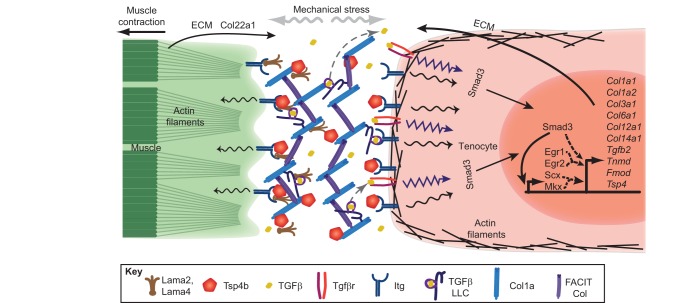Fig. 5.
Model for ECM-mediated feedback from mechanical force and its effects on tenocyte gene expression. A tenocyte (orange) synthesizes the tendon ECM, including Lama2, Lama4 (brown), Tsp4b (red pentagons), Col1a (blue) and FACIT Col (purple), all of which signal through Itg receptors (dark blue) on muscle and tenocyte cell surfaces in response to mechanical stress (gray arrows). In addition, stress causes the ECM to release TGFβ (yellow) from the TGFβ large latent complex (LLC) (gray dotted arrows). Itg and TGFβ signaling in tenocytes feedback to regulate Scx-, Egr1/2- and Mkx-induced transcription (dashed arrows) of the same Itg ligands as well as of other ECM components to modulate tendon stiffness. Smad3 also interacts with Scx and Mkx to activate target ECM genes. The muscle fiber also contributes to the tendon matrix by secreting FACIT Col22a1.

